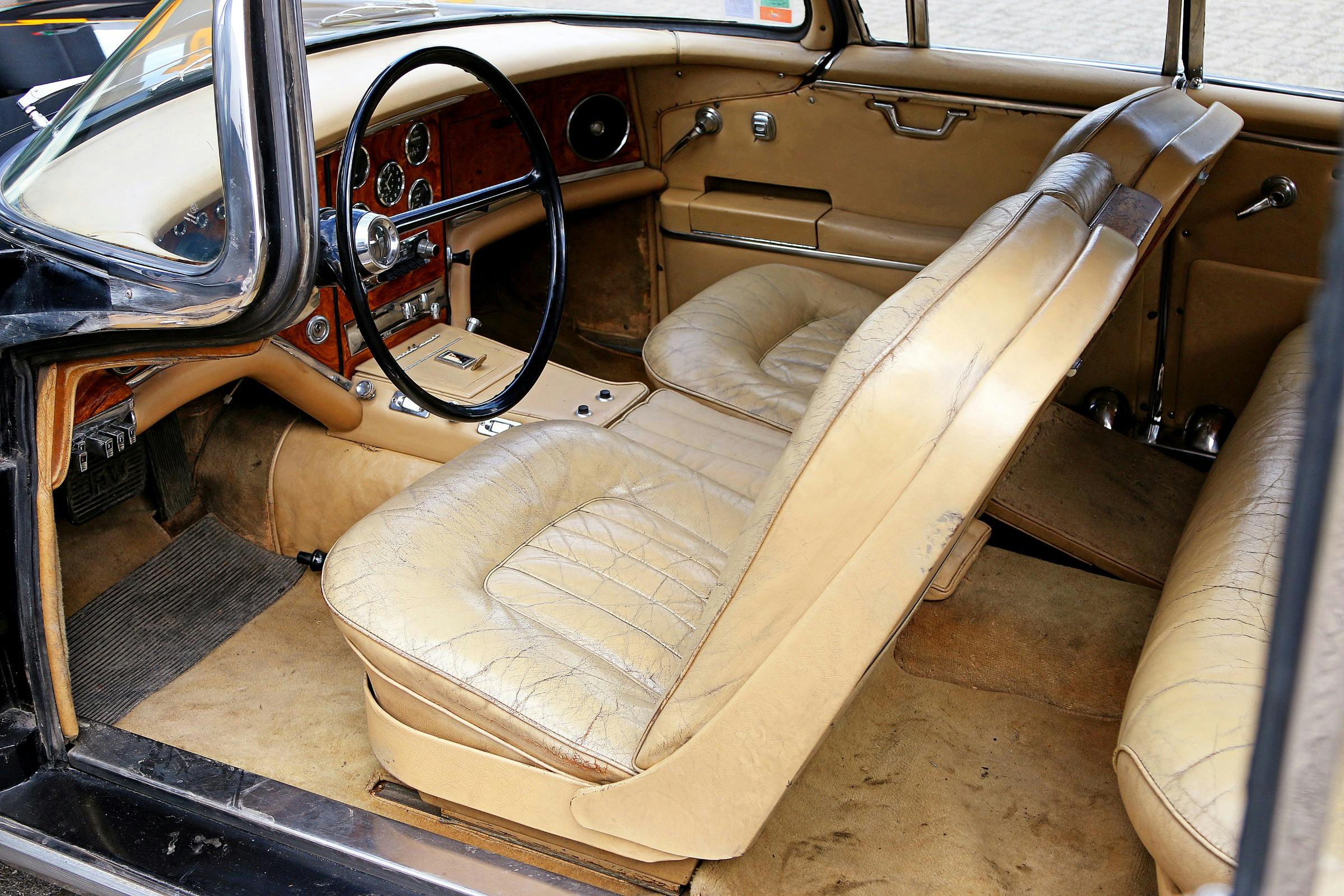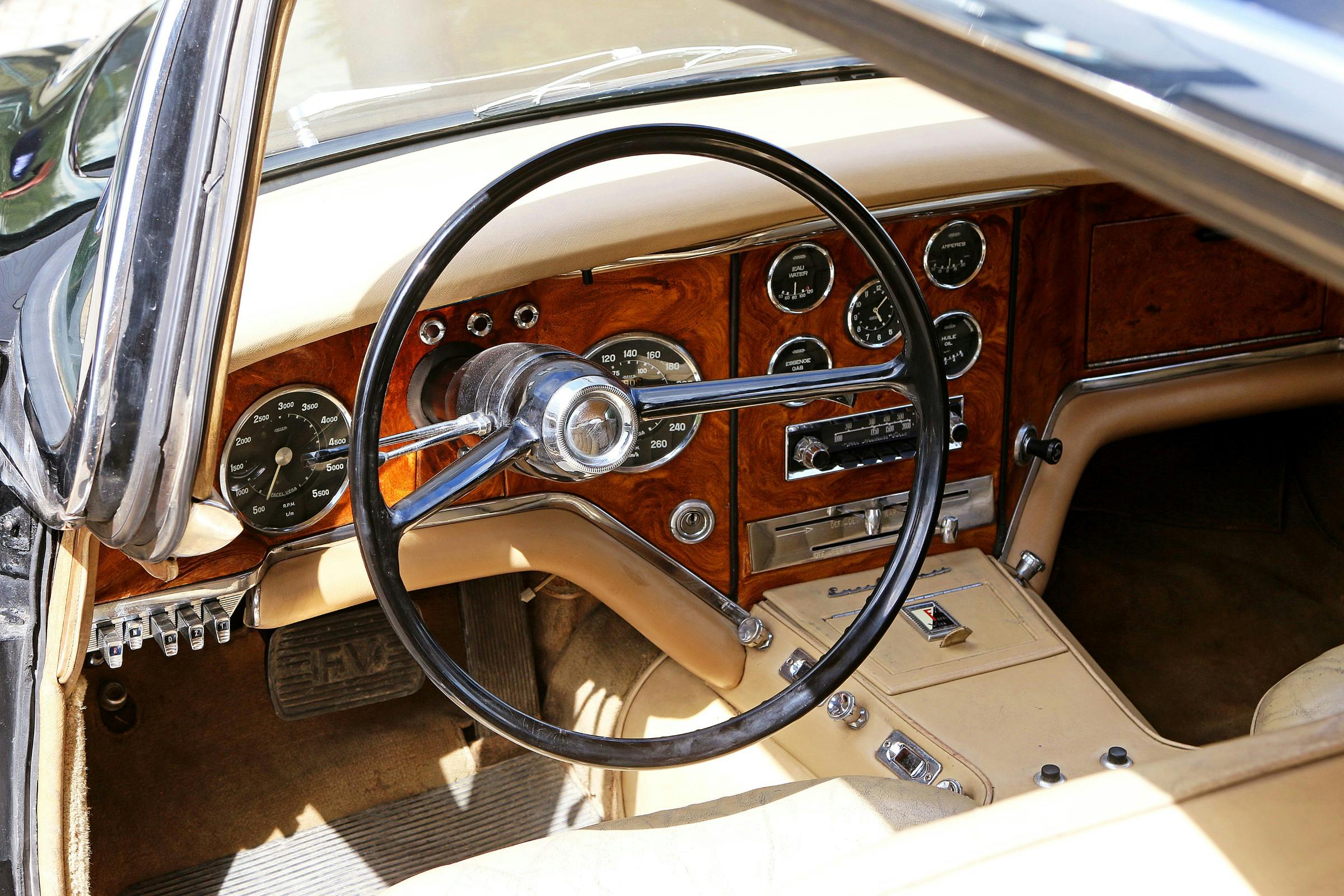Media | Articles
The coolest cats of the ’50s drove this extinct Chrysler-powered car
Between 1954 and 1964, France’s Facel Vega produced hugely expensive and exclusive hand-made grand tourers that were usually powered by Chrysler V-8s. The man behind the company was Jean Daninos, who in 1939 founded Forges et Ateliers de Construction d’Eure et de Loir (FACEL), to produce machine tools for the aircraft industry.
Daninos began his career in the 1930s, working alongside André Citroën, whom he helped to design and engineer the Traction Avant. Throughout the Second World War, Facel thrived. Once the hostilities were over, Daninos built a special body on a Bentley Mk VI chassis for himself. Then, he built another half a dozen for his friends. It was this activity that attracted the attention of marques such as Simca and Ford, who awarded Daninos contracts to build the body shells for their low-volume coupes.
More importantly, Panhard also signed a deal with Daninos for Facel to build bodies for its Dyna four-door. This contract alone was big enough to account for 70 percent of Facel’s production capacity, but when Panhard took the work in-house in 1953, Facel suddenly had a lot of production capacity and no use for it.
Marketplace
Buy and sell classics with confidence
Daninos had a weakness for stylish luxury cars. Apart from Talbot Lago, a company which would be dead by 1959, there were no other luxury car makers in France. (Delage and Delahaye had already gone to the wall.) Daninos knew that this was his chance to become a luxury car maker, so in 1953 he created Facel Vega. Its goal was to build expensive and exclusive cars for the ultra-wealthy. Among the company’s clients were the Shah of Iran and King Hassan II of Morocco, Ava Gardner, Ringo Starr, Pablo Picasso, Christian Dior, Frank Sinatra, and Stirling Moss.

By 1954 Facel Vega was ready to unveil its first production car, a V-8-powered, four-seat coupe called the FV, which featured a De Soto Firedome 4.5-liter V-8 engine and was underpinned by a bespoke tubular and channel-section steel chassis. The power was taken to the rear wheels via a Chrysler Torqueflite push-button three-speed automatic transmission, or a Pont-à-Mousson four-speed manual. The suspension was conventional, by double wishbones and coil springs up front, with a live Salisbury axle at the back, located by leaf springs. There was cam-and-roller steering, the brakes were drums all round, and bolt-on wire wheels were standard.
Styled by Facel’s in-house designer Jacques Brasseur, the FVS was nothing short of sensational. Glamorous and opulent, it could top 135 mph while keeping its occupants in luxury equal to that of any Rolls-Royce or Cadillac. There was brightwork galore, but it wasn’t gaudy. More impressively, virtually all of it was stainless steel rather than chrome-plated steel—everything was built to last.
The FV would be developed into the FVS and then the HK500. The latter would become Facel Vega’s most popular model, but in the meantime Daninos wanted to build something even more ostentatious. To that end, he stretched the FV’s chassis by 20 inches, lengthening the new four-door sedan by a whole 25 inches. At 15 feet long, the FV was not a small car to begin with, either.
Unveiled at the 1956 Paris Salon, the Excellence was unlike anything seen before or since. Its pillarless construction and rear-hinged back doors were bonkers. Unfortunately, they led to no end of engineering problems, as the doors had a tendency to fly open when the car rounded a corner. Facel Vega’s solution, when it returned to the 1957 Paris Salon with the same prototype, was a 5.8-liter Chrysler Hemi V-8.

It wasn’t until spring 1958 that the first 10 Excellences were ready for delivery, each with a 6.3-liter Chrysler V-8 in its nose. Over the next three years, the company produced another 134 cars. But in 1962 Facel Vega went into receivership, although it would limp on for another two years, producing cars at a trickle. Among them were another eight Excellences, taking the total production run up to 152.
When Jean Daninos had started to create Facel Vega, he assumed that France would take very few of his cars because of punitive tax laws. In the end, almost a third of the Excellences made (48) were sold in the home market. North America took 63 and the UK 13, with most of the others going to various Arab states and an array of Western European countries. The number of survivors is now unknown, but three are in the Isle of Man Motor Museum, so if you’re now desperate to see one of these astonishing vehicles, you know where to go.
***
Check out the Hagerty Media homepage so you don’t miss a single story, or better yet, bookmark it. To get our best stories delivered right to your inbox, subscribe to our newsletters.









I love readingnews bout one-off an unusual, different cars. Just can’t afford more subscriptions, so i depend on occasional shots like this to read up
I bought a 1961 Facel Vega Excellence from Ferrari of Los Gatos in 1982. It has been bought new by Winthrop Rockefeller and then went to Bill Harrah’s original museum. I still have the Harrah’s display plaque and original steel wheels, mine had optional wire wheels and black interior. All had crystal brandy decanter burled walnut rear trays, silver comb & brush and factory hopped up Chrysler 383 and torqueflyte. I sold it at the first Pebble Beach area auction in 1986 held weekend of PB concours. It was very low and it’s striking design drew a crowd everywhere I went.
I don’t know about the ash trays, but all the rest of the ” burled walnut” was in fact faux painted metal
To me, the most facinating factoid about the Facel Vega Excellence is that it very nearly became the basis for a 1959 Packard Patrician. Stude-Packard Corporation wanted to buy Facel bodies, put the Packard V8 in it, restyle the grill, and you have a super luxury Packard. BUT, partner Mercedes Benz objected fearing it would compete with it’s 300 model. This killed off Packard for good.
I had a classmate in the mid1960s who’s dad owned one. I got to ride in it a couple of times. It was a 4 speed and to me, it seemed pretty exotic.
I think 1954 was a little early for a Torque Flite
1954–1961 PowerFlite — 2-speed automatic · 1956–2007 TorqueFlite. 1956–1961 A466 — 3-speed automatic
I am trying to make my classic cars hopefully you can help me to buy more than now that I collected just 55 of them I’ll increase them to 1000 Best Regards, Dr Hami
Rear and side are interesting, the lead shot being an angle of the two is likely the best view of this car. The front end make me think Edsel… doesn’t matter if this was first or way fancier.
Yeah… an Edsel-Benz.
Good article on a marque that’s not as well-known is it ought to be. Thanks!
I’d bet that many folks (myself included, once,) mistakenly associated the name with the oppositely-intended Chevy Vega.
I am a bit confused about: “Its pillarless construction and rear-hinged back doors were bonkers. Unfortunately, they led to no end of engineering problems, as the doors had a tendency to fly open when the car rounded a corner. Facel Vega’s solution, when it returned to the 1957 Paris Salon with the same prototype, was a 5.8-liter Chrysler Hemi V-8.
How did an engine swap correct the door/engineering problems?
We’re just going to bypass the chic and stunning Ava Gardner standing next to hers?
There was one in the basement garage of a Montreal building where I delivered papers in the 1960s. Fast forward to 1983, I see the same car parked across the street from my house in Ontario. The son in law purchased it for the princely sum of $500 at an auction in the same garage. There were only 2 buyers there and the other fellow wanted the 1930s Cadillac also offered. Lovely car.
My FIL,who was a car salesman in Riverside California in the 60’s and 70’s took in a Facel Vega on a trade in.He sold after keeping it for a year or so.I often wonder who the original or was and where it is now.
The various mopar powered cars from the 50’s and 60’s seem to almost always look good.
“rear-hinged back doors were bonkers. Unfortunately, they led to no end of engineering problems, as the doors had a tendency to fly open when the car rounded a corner. Facel Vega’s solution, when it returned to the 1957 Paris Salon with the same prototype, was a 5.8-liter Chrysler Hemi V-8.”
When your rear doors fly open at random, fix it by dropping in a bigger engine. Sure, makes sense to me. Didn’t Jay Leno say that there’s no problem that can’t be solved with more horsepower?
“Its pillarless construction and rear-hinged back doors were bonkers. Unfortunately, they led to no end of engineering problems, as the doors had a tendency to fly open when the car rounded a corner. Facel Vega’s solution, when it returned to the 1957 Paris Salon with the same prototype, was a 5.8-liter Chrysler Hemi V-8.” Please explain how the Chrysler motor provided the solution to the issue of the doors flying open on corners. Am I missing something?
Those Beauties are still out there. Two weeks ago I was leaving a great car meet in Switzerland.
There were amazing cars present including a Ferrari Daytona convertible.
When I drove off I crossed a dark blue Facel Vega that arrived the moment I left. I was more excited to see a Facel Vega on the road than all the other super rare vehicles present.